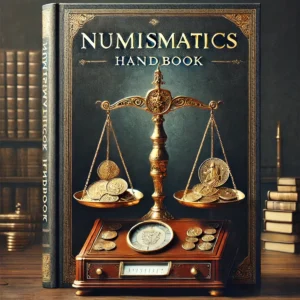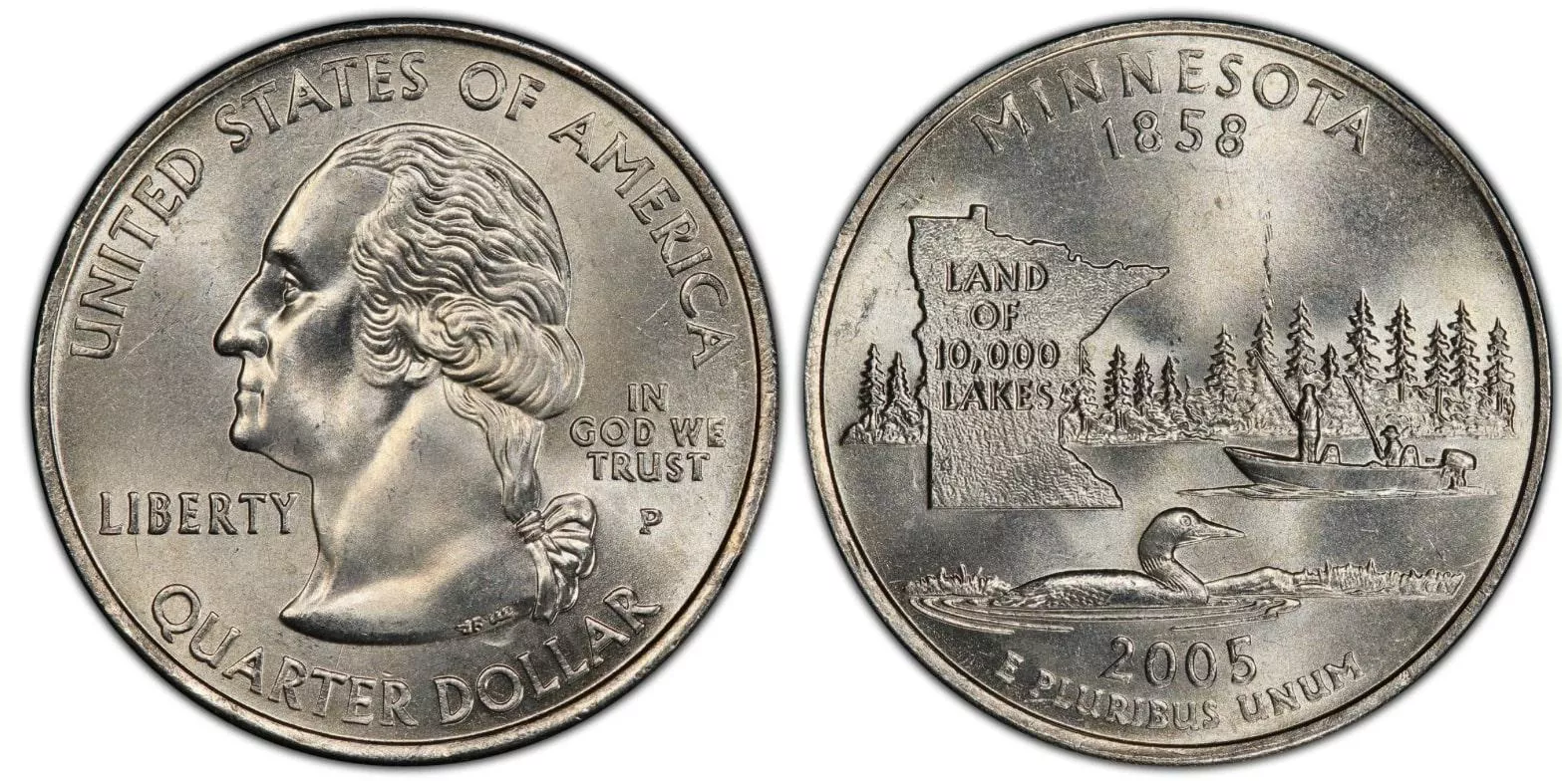Understanding Coin Errors & Misprints: Guide for US Collectors
Explore the fascinating world of U.S. coin errors and misprints — uncovering rare mistakes that can transform an ordinary coin into a prized collectible worth thousands.

📘 Download the full guide: Numismatist’s Handbook — A +135-page expert resource on U.S. coin collecting.
Why Coin Errors Matter
Coin errors and misprints have fascinated collectors for decades. Whether it’s a doubled die, an off-center strike, or a rare overdate, mint errors offer a glimpse into the manufacturing quirks of U.S. coinage — and sometimes, into extraordinary value.
Collectors love error coins for:
- Their rarity and visual uniqueness
- The chance to find valuable pieces in everyday change
- Their connection to U.S. Mint history and craftsmanship
- Opportunities for massive returns compared to face value

Some errors are minor curiosities worth a few dollars. Others, like the 1955 Doubled Die Lincoln Cent or the 1937-D 3-Legged Buffalo Nickel, have achieved legendary status, commanding four-, five-, and even six-figure prices.
Whether you’re checking an old collection or hunting through pocket change, learning to spot errors opens up an exciting and rewarding corner of numismatics.
Types of U.S. Coin Errors
Understanding the different types of errors is crucial for collectors. Here are the major categories:
- Doubled Dies: Caused by a misalignment during die creation, resulting in a noticeable doubling of design elements like dates and lettering.
- Off-Center Strikes: Coins struck when the blank (planchet) is improperly positioned, resulting in missing parts of the design.
- Broadstrikes: Coins struck without a collar, causing them to spread and appear larger than normal.
- Clipped Planchets: Coins missing a curved piece, often from a misfeed in the blanking machine.
- Wrong Planchet Strikes: Coins accidentally struck on blanks meant for a different denomination.
- Die Cracks & Cud Breaks: Raised lines or missing sections caused by cracked or damaged dies.
Each type carries its own appeal and collectible premium based on visibility, severity, and scarcity.

Most Valuable U.S. Coin Errors (Detailed Breakdown)
| Error Type | Famous Example | Est. Value Range |
|---|---|---|
| Doubled Die Obverse | 1955 Lincoln Cent | $1,000–$10,000+ |
| 3-Legged Buffalo | 1937-D Buffalo Nickel | $800–$2,000+ |
| Off-Center Quarter | Modern (25%+ off-center) | $50–$500+ |
| Wrong Planchet Error | 1943 Bronze Lincoln Cent | $100,000–$400,000 |
| Clipped Planchet Lincoln Cent | 1960s–1990s issues | $10–$100 |
| Die Break “Cud” Error | Various (Lincoln Cents, Nickels) | $50–$500+ |
✅ Values depend heavily on the clarity, severity, and demand for the specific error.
Coin Error vs Variety: What’s the Difference?
| Aspect | Coin Error | Coin Variety |
|---|---|---|
| Cause | Minting mistake | Intentional design differences |
| Example | Off-center strike, doubled die | Small date vs large date |
| Appearance | Dramatic and obvious | Subtle (often needs magnification) |
| Collector Value | Error coins often command higher premiums | Varieties are more specialized |
Tip: Errors are usually more eye-catching and easier to spot, while varieties require a trained eye and detailed comparison.
How to Spot and Confirm a Coin Error
- Look Closely: Use a 10x loupe or magnifying glass.
- Study Key Areas: Dates, mint marks, rims, and central designs.
- Compare to Certified Examples: Use PCGS, NGC, and Numismatic guides.
- Weigh Your Coin: Wrong planchet coins will often have off-standard weights.
- Seek Professional Grading: Get authentication from PCGS or NGC for high-value pieces.
How Much Are Coin Errors Worth?
Several factors influence coin error values:
- Type of Error: Major errors = major premiums.
- Visibility: Bold, dramatic errors attract more buyers.
- Condition: Higher-grade error coins are much scarcer.
- Demand: Famous errors like 1955 Doubled Dies have huge collector bases.
- Rarity: Lower surviving populations drive higher prices.
✅ Certified and slabbed errors often sell for 2x–5x more than raw examples.

How to Sell U.S. Coin Errors
- Online Marketplaces: eBay, GreatCollections (get coins certified first for best results)
- Major Auctions: Heritage Auctions, Stack’s Bowers for high-value errors
- Local Dealers: Quick turnaround for mid-range pieces
- Coin Shows: Connect with specialized error coin dealers
🛑 Never clean your coins — cleaning destroys originality and reduces value.
Common Coin Errors to Look For in U.S. Coins
| Denomination | Common Error Types |
|---|---|
| Lincoln Cents | Doubled Dies, Cuds, Off-Centers, Wrong Planchets |
| Jefferson Nickels | Die Cracks, Off-Center Strikes |
| Roosevelt Dimes | Clipped Planchets, Misaligned Dies |
| Washington Quarters | Doubled Dies, Off-Center Strikes |
| Kennedy Half Dollars | Wrong Planchet Strikes, Missing Clad Layer |
| U.S. Dollar Coins | Major Die Breaks, Wrong Planchet Errors |
Popular Coin Errors vs Rare Coin Errors
| Category | Example | Typical Price Range |
|---|---|---|
| Popular Error | 1955 Doubled Die Lincoln Cent | $1,000–$10,000+ |
| Popular Error | 3-Legged Buffalo (1937-D) | $800–$2,000+ |
| Rare Error | 1943 Bronze Lincoln Cent | $100,000–$400,000 |
| Rare Error | 1969-S Doubled Die Obverse | $30,000–$100,000+ |
| Minor Error | 1999 Wide AM Cent | $50–$700 |
| Minor Error | Off-Center Modern Quarter | $50–$300 |

FAQ About U.S. Coin Errors and Misprints
What is the most valuable U.S. coin error?
The most valuable U.S. coin error is the 1943 Bronze Lincoln Cent, which can sell for $100,000 to over $400,000 depending on its condition, certification, and auction demand.
How can I tell if a coin has an error?
To identify a coin error, examine the coin carefully using a 10x magnifying loupe. Look for signs like doubling on the date or lettering, off-center strikes, missing design elements, unusual planchet shapes, or a weight that differs from the official standard.
What types of coin errors are most valuable?
The most valuable types of coin errors are doubled dies such as the 1955 Lincoln Cent, wrong planchet strikes like the 1943 bronze cent, major off-center strikes over 25%, famous varieties like the 3-legged Buffalo Nickel, and major die breaks.
Are coin errors worth money?
Yes, many U.S. coin errors are worth significant money. Minor errors can sell for $50 to $300, while rare or famous errors can be worth thousands or even hundreds of thousands of dollars depending on demand and condition.
Should I clean a coin error before selling it?
No, you should never clean a coin error. Cleaning removes the original surface and patina, significantly reducing the coin’s collectible and resale value. Original, unaltered surfaces are crucial for maximum pricing.
What’s the difference between a coin error and a coin variety?
A coin error is a mistake that happens during the minting process, such as a misaligned die strike or an off-center coin. A coin variety, on the other hand, is a deliberate or natural design variation, such as a change in date style or mintmark positioning.
How do I sell valuable coin errors?
The best way to sell valuable coin errors is to have them certified by a trusted grading service like PCGS or NGC. Once certified, you can sell them through major auction houses like Heritage Auctions or Stack’s Bowers, or through online marketplaces such as GreatCollections or eBay for mid-range certified pieces.
Are modern coin errors valuable?
Yes, modern coin errors like off-center strikes on State Quarters, missing clad layers, or Presidential Dollar planchet errors can sell for $50 to $500 or more, depending on the clarity and severity of the error and market demand.
How much is a clipped planchet error worth?
Clipped planchet errors on coins such as Lincoln Cents or Roosevelt Dimes generally sell for between $10 and $100 depending on the size and completeness of the clip and the popularity of the coin series.
What equipment do I need to detect coin errors?
To detect coin errors accurately, you will need a 10x to 20x magnifying loupe, a precise digital scale to confirm weight deviations, and access to professional coin references and guides like the Numismatist’s Handbook. Certification through PCGS or NGC is highly recommended for valuable finds.

